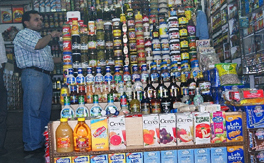Safe food guide: a consumers guide to GM free food
 The Greenpeace India guide to GM-free food that gives consumers an insight into the positions of food brands, on the use of genetically modified ingredients. Has categorized 17 food companies in India into 'red list' & 'green list' based on their policy on the use of GM ingredients.
The Greenpeace India guide to GM-free food that gives consumers an insight into the positions of food brands, on the use of genetically modified ingredients. Has categorized 17 food companies in India into 'red list' & 'green list' based on their policy on the use of GM ingredients.
Consumers and farmers are the most significant stakeholders of the food industry and have, across the world, determined the direction in which the industry has moved. Across the European Union, for instance, consumers have rejected GM foods, creating a GM-free food market. Similar examples exist in China and Brazil. In India, rice exporters to the EU have worked to create a GM-free rice zone consisting of basmati rice cultivating states. A shift away from GM foods is possible and businesses can adapt to it. The Greenpeace India guide would indicate where the processed food industry stands on GM foods, and would help consumers identify food brands and their positions. Greenpeace demands that food businesses voluntarily adopt a no-GM policy, because of the risks to health and environment. They should take proactive steps to label themselves GM-free. Greenpeace believes that consumers can help replace industrial agriculture of genetically engineered crops, with sustainable farming that has low external inputs, protects biodiversity, and helps meet food and employment needs.
